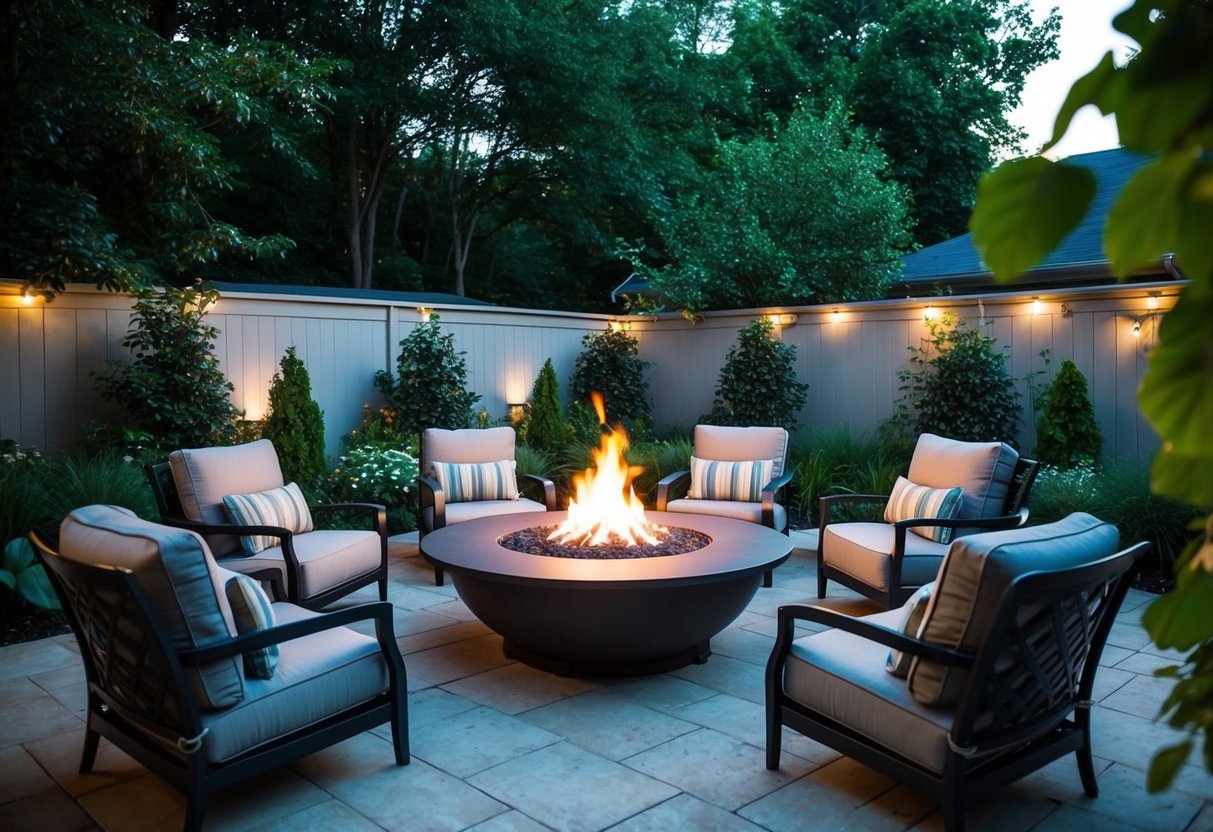Transform Your Yard with a DIY Fire Pit: Safety and Style in One
Creating a DIY fire pit in your yard can elevate the ambiance of your outdoor living space, offering both safety and aesthetic appeal. This project not only enhances the appearance of your home but also provides a cozy gathering spot for family and friends. With a practical approach, building a fire pit can be a straightforward and rewarding home improvement endeavor.
A well-designed fire pit serves as the perfect focal point, drawing people outdoors to enjoy the natural beauty of their surroundings. Whether entertaining guests or simply relaxing under the stars, the warmth and light of a fire pit provide a comfortable and inviting atmosphere. By choosing the right materials and following safety guidelines, a DIY project can seamlessly transform any yard into a versatile and stylish retreat.
Understanding Fire Pit Basics

Exploring the essentials of fire pits involves recognizing the different types available and the reasons they can be a valuable addition to an outdoor space. These features blend functionality with style, offering warmth and a focal point for gatherings.
Types of Fire Pits
Fire pits can be categorized based on their fuel types and design. Wood-burning fire pits provide a classic appeal, emitting the characteristic crackling sound and aroma of burning wood. They may require permits in certain regions due to open flames. Gas fire pits, fueled by propane or natural gas, offer convenience and reduced smoke, often featuring easy ignition systems. Another option is the gel fuel fire pit, known for producing a clean flame without any smoke or ashes. Each type has unique maintenance requirements and aesthetic qualities, allowing homeowners to choose according to their preference and local regulations. The choice of material, whether it be stone, metal, or concrete, also contributes significantly to the style and durability of the fire pit.
Benefits of Adding a Fire Pit to Your Yard
Incorporating a fire pit into your patio or yard can enhance outdoor living. It extends the usability of the outdoor space into cooler seasons by providing warmth and light. Fire pits are excellent for creating social hubs, encouraging gatherings around the comforting glow of a fire. They can also increase property value, offering aesthetic appeal and functional space. When strategically placed and designed, a fire pit can complement landscaping and provide a seamless blend with the natural surroundings, enhancing both form and function.
Designing Your Fire Pit

Creating a fire pit involves strategic planning, from deciding its location to selecting suitable materials. These choices significantly impact both functionality and aesthetics in your outdoor space.
Choosing the Right Location
Choosing the perfect spot for your fire pit is crucial. It’s essential to position the fire pit at least 10 feet away from structures and overhanging branches to ensure safety and prevent potential hazards. Additionally, consider wind patterns in your area, as this can affect smoke direction and comfort for guests.
Elevating the fire pit’s area with gravel or a metal ring can help delineate the space effectively. The surface should be stable and level to accommodate seating comfortably. Proximity to outdoor furniture for seating and mingling while maintaining space to move around safely is also essential for both aesthetic and functional purposes.
Selecting Materials and Style
The materials and style of your fire pit should complement your existing landscape and home design. Brick, stone, and concrete are popular choices for their durability and heat resistance. For a rustic charm, natural stone may be ideal, while a sleek, modern look might be achieved with concrete or metal.
The style of the fire pit not only adds to the yard’s aesthetic but also influences the type of fuel used. A natural gas or propane fire pit requires considerations for fuel storage and accessibility, while a wood-burning pit offers a classic ambience but necessitates proper ventilation and ash disposal.
Sizing Your Fire Pit
Determining the size of the fire pit involves balancing functionality with the space available. The diameter typically ranges from 36 to 44 inches, ensuring that it provides warmth and light without overwhelming the area or crowding seating. The height should allow guests to comfortably enjoy the warmth without straining.
Larger fire pits may require additional resources and maintenance, whereas smaller ones might be ideal for intimate gatherings. Assessing how many people you intend to accommodate and how you plan to use the fire pit will guide the optimal size. Matching the fire pit’s capacity with its intended use is crucial for effective design.



